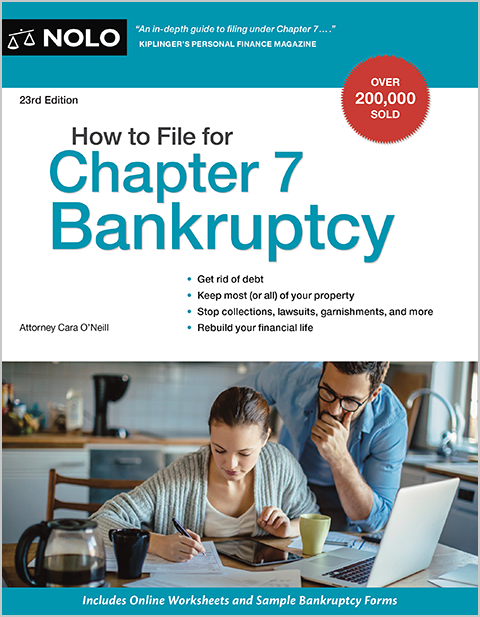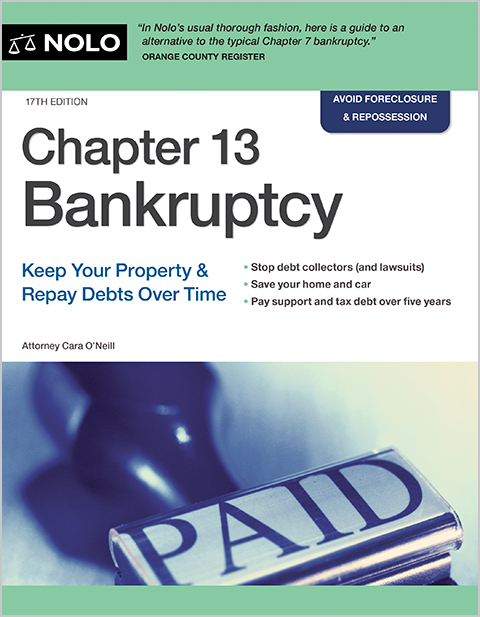Learn about the documents needed to complete the bankruptcy petition and those that must be provided to the trustee.
If you're considering bankruptcy, you likely want to know what information you need. Below, you'll learn about the documents required in bankruptcy before and after filing. Also, be sure to bookmark this article. You can use it as a handy bankruptcy checklist when you're ready to complete the forms needed in Chapters 7 and 13.
What Information Is Needed in Bankruptcy?
When you fill out your bankruptcy paperwork, you'll be asked to disclose information regarding your financial affairs, such as your income and expenses, assets and debts, and property transfers. Also, you'll need to provide certain documents to the bankruptcy trustee to prove the accuracy of the information provided.
What Documents Do You Need to File for Bankruptcy?
Below are the most commonly required documents in bankruptcy. The documents you'll need are the same whether you are filing a Chapter 7 bankruptcy or Chapter 13 matter, with slight variations, which we explain when they apply.
Tax Returns
You'll usually need to provide copies of your tax returns or tax transcripts for the last two years in a Chapter 7 case and four years in a Chapter 13 matter. If you have unfiled returns because you weren't required to file—for instance, your only income source was nontaxable disability benefits—you'll need to explain why. A short letter of explanation will usually work.
If you failed to file, you can expect the trustee to require you to do so and provide copies before concluding or approving your case—especially in a Chapter 13 case. Learn about eliminating tax debt in bankruptcy.
Income Documentation
If you're an employee, you'll need copies of pay stubs for the six-month period before the bankruptcy and your last two W-2s. You'll also need proof of other income sources such as Social Security funds, disability, or rental properties.
If you're self-employed and filing for bankruptcy, you'll probably need to provide a year-to-date profit and loss statement and the two full years before filing. Also, be prepared to present business bank statements to verify the profit and loss amounts.
Proof of Real Estate Fair Market Value & Mortgage Statements
If you own real estate, you'll likely need to provide proof of the property's fair market value. Your options include choosing an online valuation, a broker's price opinion, or a full appraisal. What you choose will likely depend on the potential amount of equity or your district's guidelines.
Also, plan to provide mortgage statements showing current loan balances and payment amounts. Some trustees also require the deed of trust and proof of home insurance.
Vehicle Registration, Proof of Value & Insurance
If you have a car, you must provide proof of its value. Most trustees will accept an online printout from nada.com or kbb.com.
If you have a car loan, you'll need a recent loan statement showing your balance and monthly payment to prepare your paperwork. Depending on the particular trustee, you might need to produce it along with copies of your registration and proof of insurance.
Learn more about your car loan in bankruptcy.
Retirement And Bank Account Statements
The bankruptcy trustee must receive all recent bank and retirement account statements, although you'll submit some documents to the court in some states. Learn about protecting retirement accounts in bankruptcy.
Identification
When you go to your hearing with the trustee, you will be asked to show valid photo identification, such as a driver's license and proof of your social security number. Find out about proving your identity at the 341 meeting of creditors.
Other Documents You'll Need in Bankruptcy
If you have other circumstances affecting your bankruptcy, such as being required to pay alimony, child support, or another unusual expense, you must show proof of these costs. For instance, providing a copy of a child support order is common. If you've divorced recently, you might need to produce an order or marital settlement agreement documenting a property distribution.
Check the guidelines provided by your district and your specific bankruptcy trustee for exact documentation requirements. Not only do some trustees require more proof than others, but the particular evidence you'll have to produce will also be determined by the facts of your case.
What Information Do You Need to Complete the Bankruptcy Forms?
Most of the information you'll need to fill out your bankruptcy paperwork will be in those documents, including asset value and income information. For example, you'll calculate your average monthly income using the income documentation. Similarly, you'll look to your real estate and car documentation to fill in the parts regarding the value of these assets, your lenders, and monthly loan payments.
However, you'll need to gather more information to complete your bankruptcy petition, including creditor, co-debtor, expense, and pending lawsuit information. Start by finding loan statements or bills to list each of your creditors in the bankruptcy. Alternatively, you can obtain a credit report showing all your debts; however, be aware that you must list the creditor's billing address, which rarely appears on your credit report. So, using the credit report to verify that you've listed all debts is best.
You should also look at your utility bills and other expenses to determine accurate figures for your monthly utilities and costs, such as food, dry cleaning, and transportation. Usually, you won't be required to send these documents to the trustee (unless your expenses are higher than usual, in which case you might trigger a bankruptcy audit).
Credit Counseling Requirement
In addition to the documents above, the law requires that you complete a credit counseling class and obtain a certificate before you can file for bankruptcy. These courses can usually be completed online in under a couple of hours.
See Credit Counseling & Debtor Education Requirements in Bankruptcy to learn more about this requirement.
Need More Bankruptcy Help?
Did you know Nolo has made the law accessible for over fifty years? It's true, and we wholeheartedly encourage research and learning. You can find many more helpful bankruptcy articles on Nolo's bankruptcy homepage. Information needed to complete the official downloadable bankruptcy forms is on the Department of Justice U.S. Trustee Program.
However, online articles and resources can't address all bankruptcy issues and aren't written with the facts of your particular case in mind. The best way to protect your assets in bankruptcy is by hiring a local bankruptcy lawyer.
|
|

